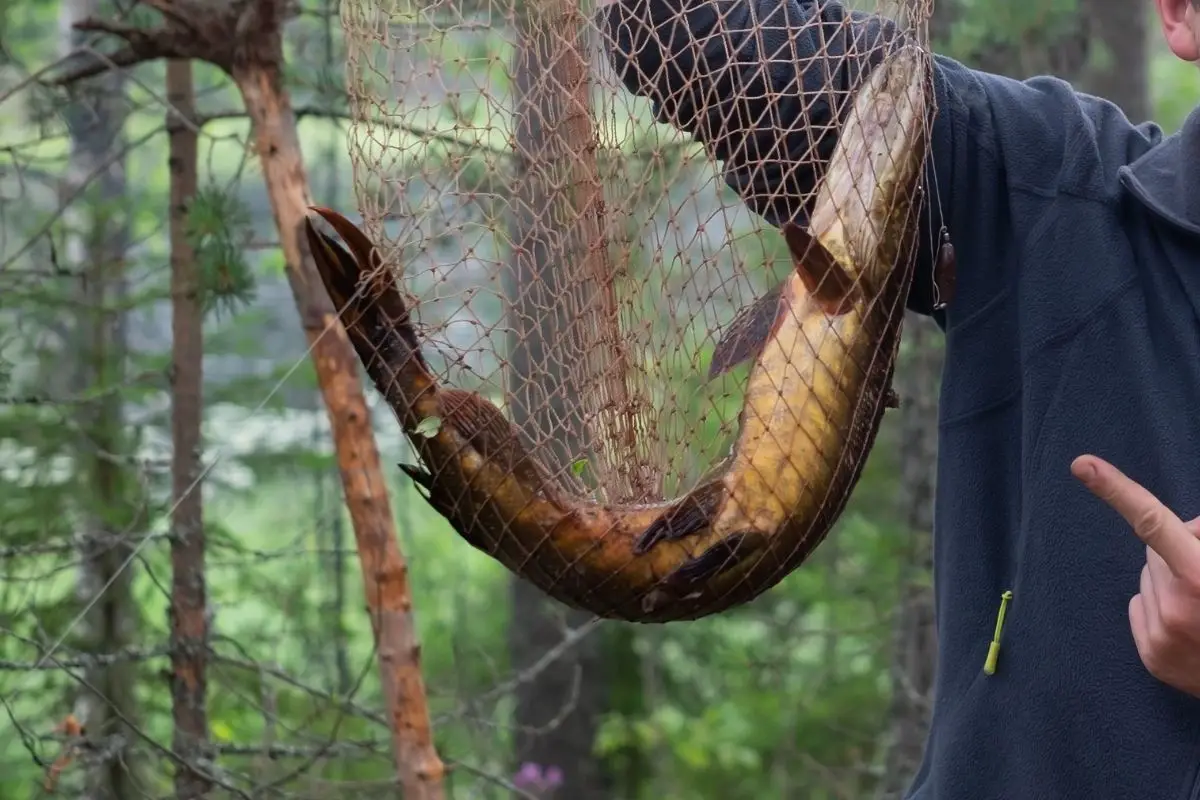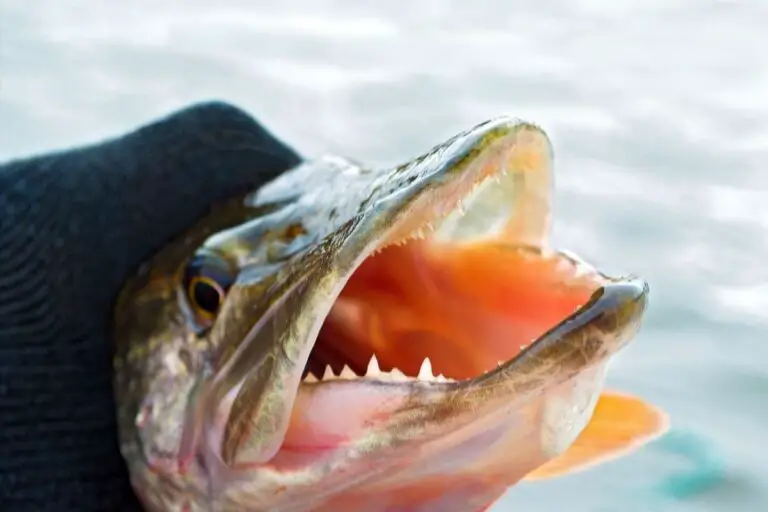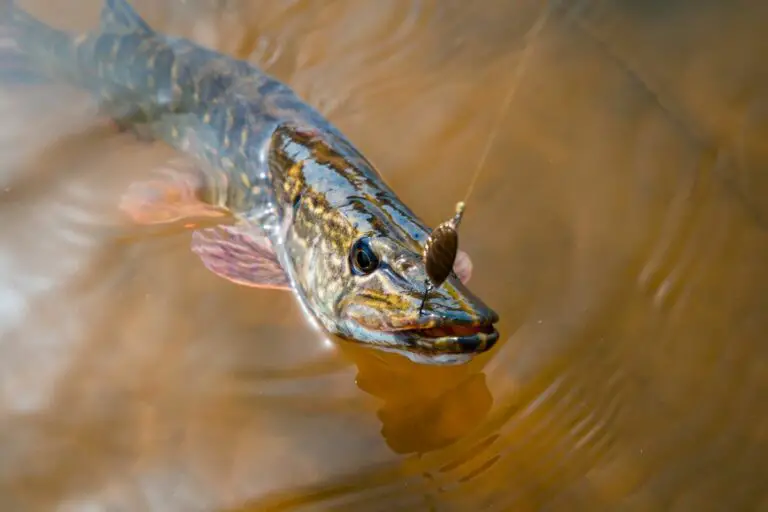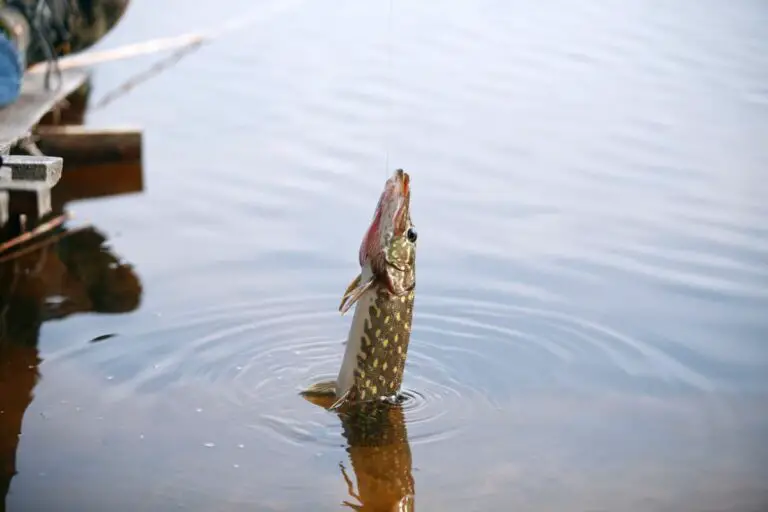How Big Should a Northern Pike Be to Mount?
Northern pikes are majestic species and depending on your location you can catch some trophy-sized pikes that are worthy of being mounted to show off for years and years to come.
So, how big should a northern pike be to mount? A northern pike should be over 40 inches to be mounted. There are two methods to mount a fish which are skin taxidermy or creating a replica. It can cost around $11-$15 per inch to mount a pike fish but the price might vary depending on the taxidermist you choose.
Keep reading to learn more about how to prepare a trophy pike fish to be mounted and how much it costs.
This content was written by Outdoorskilled.com and is protected under copyright laws, sites copying this content will be pursued legally
Table of Contents
What’s Considered a Trophy Northern Pike?

What constitutes a “Trophy Fish” mainly depends on how much the fish weighs and its length.
A northern pike fish that’s over 20 pounds and 40 inches in length is considered by most to be a trophy fish.
If you happen to catch a trophy northern pike and you want to show it off to your friends, you might consider getting it mounted.
By the way, I have a guide to Ice fishing for pike here that has everything I have learned over the years that have helped me get trophy pike, so make sure to check it out to use that info and tips, and please do email me with your catches after your next trip.
For a complete list of the gear for pike fishing, check out the last section of the article.
How to Prepare Pike to Be Mounted?
In order to prepare your pike fish to be mounted, you will need to preserve it before bringing it to a taxidermist.
Here are the steps you need to take to prepare your fish for mounting:
- First, you need to photograph every angle of your pike fish. That’s because fish will begin to lose their color in about 90 seconds after they’re removed from the so, having a good photograph will help your taxidermist to recreate the fish’s exact color.
- Try not to handle the pike fish too much before bringing it to the taxidermist. You need to remove the hook carefully and avoid rubbing off the fish’s scales or damaging its body by gutting it.
- Select a “show side” which is the side of the pike fish that you want to be displayed on your mount. It’s very important to keep this side facing up when you store the fish so you wouldn’t accidentally damage it and ruin your display.
- When wrapping your pike fish to store it, avoid using anything abrasive like a newspaper or a paper bag as this will cause blemishes on the fish’s body or rub off the scales. Instead, it’s recommended to use a soft wet towel to wrap gently around the pike’s body.
- Place the wrapped fish in a cooler or a freezer to preserve it until you can get it to your taxidermist. Make sure the fish is placed on a flat surface with the “show side” facing up.
- It’s usually recommended to leave the pike fish in the freezer for two days to ensure that it’s solid all the way through with a thick coating of ice. This will allow you to transport the pike safely to your taxidermist without risking any damage to the body.
Here is a really simple 2-minute video explaining the basics of mounting any fish:
What Are the Main Types of Fish Mounts?
There are two main types of fish mounts which are skin taxidermy mount and replicas. Let’s take a closer look at each type.
The skin taxidermy mounting method involves removing the skin, head, and tail of the fish then wrapping it around a foam mold that’s similar in size and shape to the original fish.
This kind of fish mount might have a more sentimental value because you’ll get an actual physical part of the trophy fish you caught, however, preserving and transporting the original fish for this process can be quite challenging.
The replica mounting method involves building a 100% artificial copy of the fish you caught. For this method you won’t need to preserve the actual body of the fish, you only need to provide highly accurate measurements and photographs of it. This kind of mount is ideal if you prefer releasing your catches back into the water.
The cost of both methods is close and the results often look very similar. So, choosing your mounting method will mainly depend on your personal preferences.
How Much Does It Cost to Get Your Fish Mounted?
The cost of mounting a fish can vary depending on the taxidermist, the species of the fish, and the size of the fish. Taxidermists usually charge per inch of length when mounting a fish.
Coldwater and saltwater fish generally cost more to mount than warm water fish. That is because their skin tends to be oilier and requires a longer drying process.
Take a look at the following table for the average cost of mounting some popular fish species:
| Fish species | Price per inch |
|---|---|
| Bass | $11-$15 |
| Walleye | $11-$15 |
| Pike | $11-$15 |
| Trout | $14-$18 |
| Salmon | $14-$18 |
| Striped Bass | $15-$20 |
| Tarpon | $15-$20 |
| Snook | $15-$20 |
| Billfish | $15-$20 |
Related Questions
How to Maintain a Mounted Fish?
To maintain a mounted fish and make it last longer, you need to place it away from direct sunlight as UV rays will cause the colors to fade over time. You also need to clean it regularly using a slightly damp lint-free cloth or air dusters. Make sure to be careful when cleaning around the delicate fins of the fish.
How Long Does It Take to Get a Fish Mounted?
The length of time it takes to get a fish mounted can vary from 3 months to over 1 year. The longest part of the process is drying the fish which can take about 6 weeks for warm water fish species and even longer for coldwater fish species because of their oily skin. However, it’s definitely worth waiting to guarantee a high-quality result.
Helpful Resources
Pike Fishing: The Practice the Passion by Mick Brown (you can also check it on Amazon here).
Get Started with Pike Fishing
- Learn what are the best pike baits here
- Check out the best braided fishing lines for pike here
- Start getting results with these budget baitcasting reels
- learn how to fish for pike in the winter in my guide to cold weather pike fishing here.
If you like this article, please share it or pin it, you can find the share buttons below. We will really appreciate it ❤️





![Do Pike Eat Shrimp? [A Guide to Catching Pike with Shrimp]](https://outdoorskilled.com/wp-content/uploads/2022/04/shrimp-as-bait-on-hook-768x512.jpeg)


